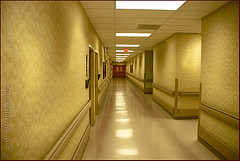
On Saturday evening, November 7 at 11:15 p.m., the U.S. House of Representatives voted to pass the health insurance reform bill. Despite countless attempts over nearly a century, no chamber of Congress has ever before passed comprehensive health care reform. This is a historic benchmark but COST CONTAINMENT is still a paramount concern as U.S. senators from both sides of the aisle consider the pros and cons of the bill before their vote.
The challenge of cost containment is to weed through the layers of bureaucracy to identify the smoking guns of waste. The LIGHT at the end of the tunnel for cost containment may ironically be all about LIGHTING. Hospitals typically operate 24 hours per day, every day of the year, which is far more lighting than any other type of property or industry, according to the U.S. Department of Energy.
So, the solution could be based on three steps:
Congressman and senators could focus on identifying the most energy efficient lighting as one of the cornerstones of health care cost containment. These public servants should ‘do the math’ to see the total impact in dollars on hospitals across the country.
The private sector should step up to participate in the lighting retrofits and play a role in the new American Energy Revolution. To start, the top lighting performer is the light emitting diode (LED). One of the absolute best ways to reduce electricity consumption and abate carbon dioxide emissions is LED lighting retrofits, according to the McKinsey Report (See Page 20). LED lights now come in tube form to replace the omnipresent 4’ fluorescent tube and they can reduce electricity lighting costs by 80 percent. For a hospital now spending $50,000 a month on lighting, costs would be reduced to approximately $10,000. The savings quickly compound to about $3.5 million over the seven-year life span, with the bulbs running 24 hours day every day of the year.
Doing the math, the next step is to look at the number of hospitals in America. According to the American Hospital Association (AHA) 2007 report, there are 5,708 registered hospitals in the US. Of the total public and private sector number, there are 1,111 state and local community hospitals and 213 federal hospitals.
If each hospital was able to save $40,000 a month or about $500,000 annually by undertaking a lighting retrofit, the annual collective savings for government-run hospitals would be $500 million. Half a billion dollars is no small figure when it comes to year-over-year annual savings.
What about the private sector participation? A recent article in Environmental Leader identifies LED Saving Solutions as one of the private sector companies that has stepped up to initiate a $100 Million LED Lighting Retrofit program that would not cost the taxpayers or the hospitals a single up-front dollar. This “Saving Share” program creates a cash-flow positive way for the hospitals to save money and only a pay a portion of the actual money saved on electricity each month.
This all may shed a little light on health care COST CONTAINMENT.

